Mateja Đumić
Automated design of relocation rules for minimising energy consumption in the container relocation problem
Jul 04, 2023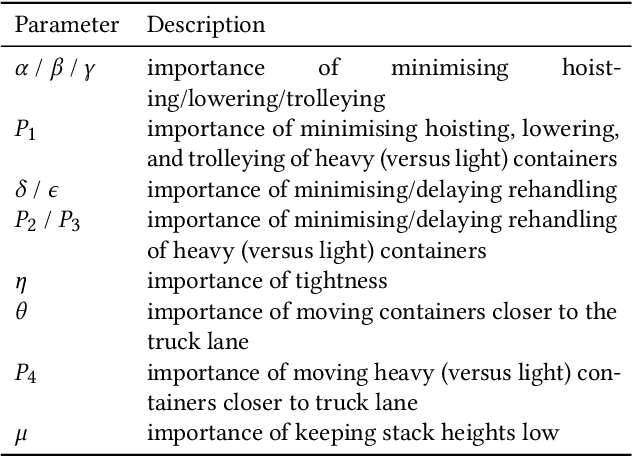
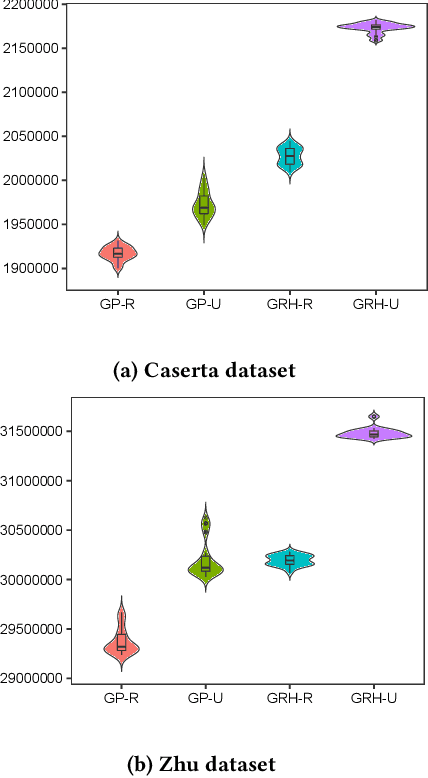
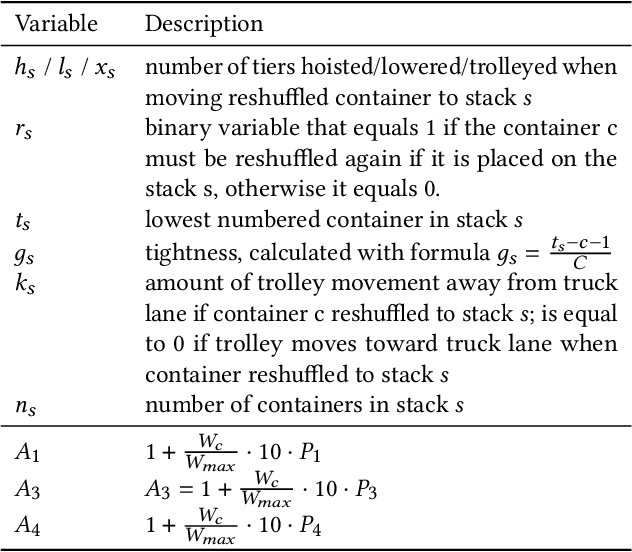
Abstract:The container relocation problem is a combinatorial optimisation problem aimed at finding a sequence of container relocations to retrieve all containers in a predetermined order by minimising a given objective. Relocation rules (RRs), which consist of a priority function and relocation scheme, are heuristics commonly used for solving the mentioned problem due to their flexibility and efficiency. Recently, in many real-world problems it is becoming increasingly important to consider energy consumption. However, for this variant no RRs exist and would need to be designed manually. One possibility to circumvent this issue is by applying hyperheuristics to automatically design new RRs. In this study we use genetic programming to obtain priority functions used in RRs whose goal is to minimise energy consumption. We compare the proposed approach with a genetic algorithm from the literature used to design the priority function. The results obtained demonstrate that the RRs designed by genetic programming achieve the best performance.
Automated Design of Heuristics for the Container Relocation Problem
Jul 28, 2021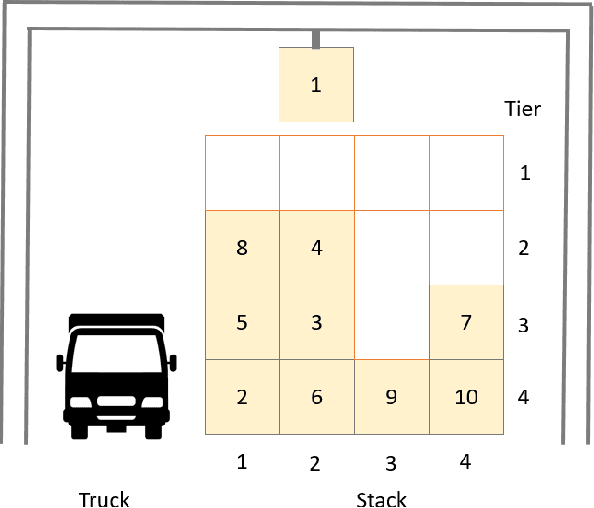
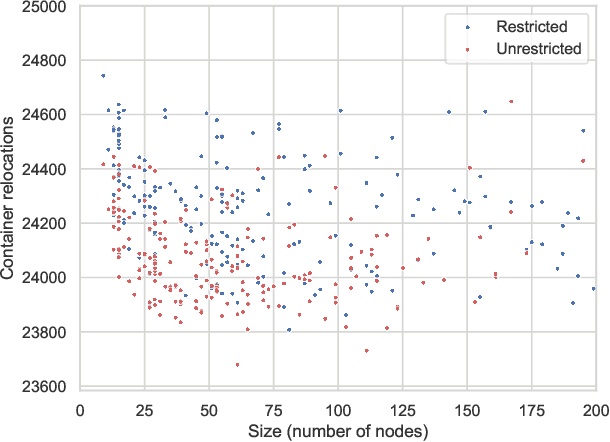
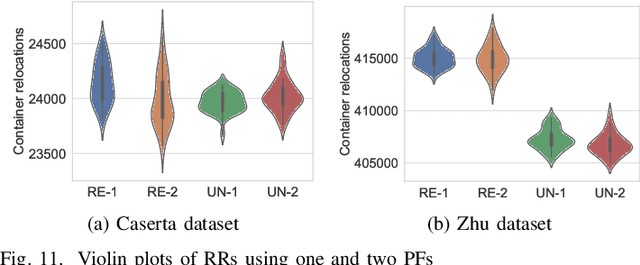
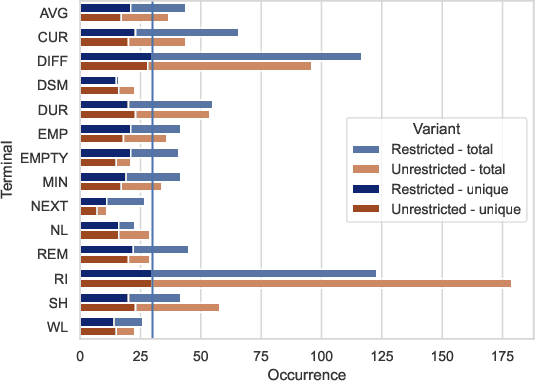
Abstract:The container relocation problem is a challenging combinatorial optimisation problem tasked with finding a sequence of container relocations required to retrieve all containers by a given order. Due to the complexity of this problem, heuristic methods are often applied to obtain acceptable solutions in a small amount of time. These include relocation rules (RRs) that determine the relocation moves that need to be performed to efficiently retrieve the next container based on certain yard properties. Such rules are often designed manually by domain experts, which is a time-consuming and challenging task. This paper investigates the application of genetic programming (GP) to design effective RRs automatically. The experimental results show that GP evolved RRs outperform several existing manually designed RRs. Additional analyses of the proposed approach demonstrate that the evolved rules generalise well across a wide range of unseen problems and that their performance can be further enhanced. Therefore, the proposed method presents a viable alternative to existing manually designed RRs and opens a new research direction in the area of container relocation problems.
 Add to Chrome
Add to Chrome Add to Firefox
Add to Firefox Add to Edge
Add to Edge